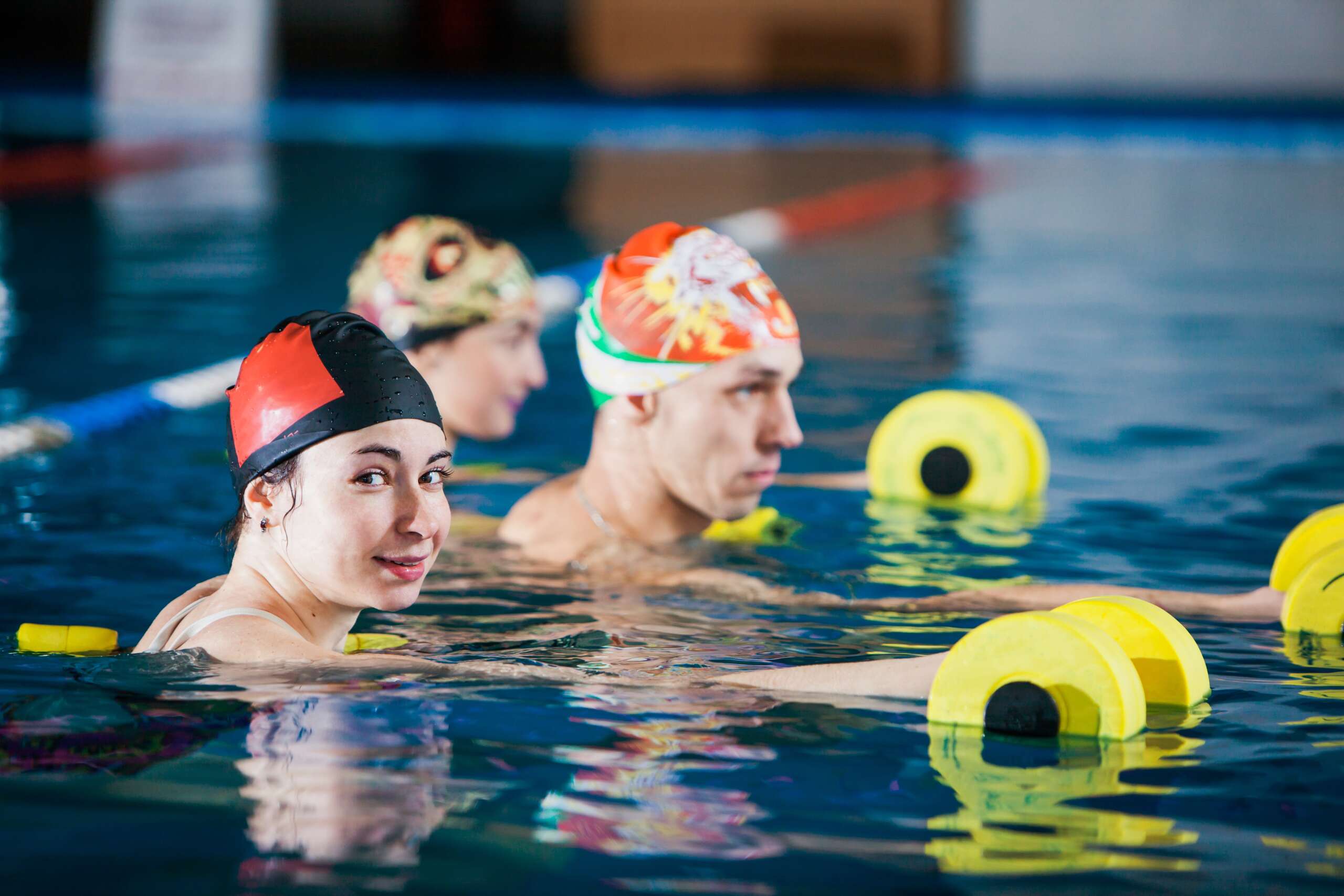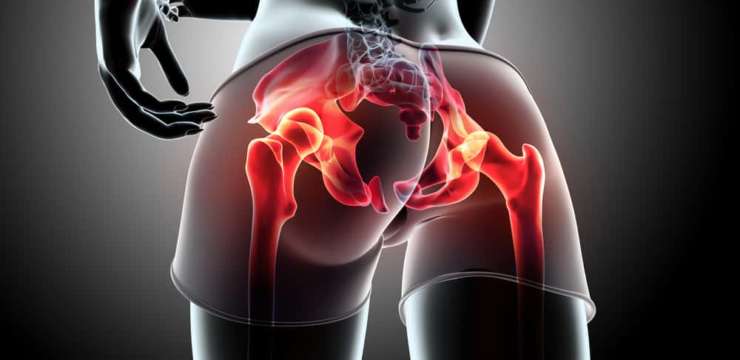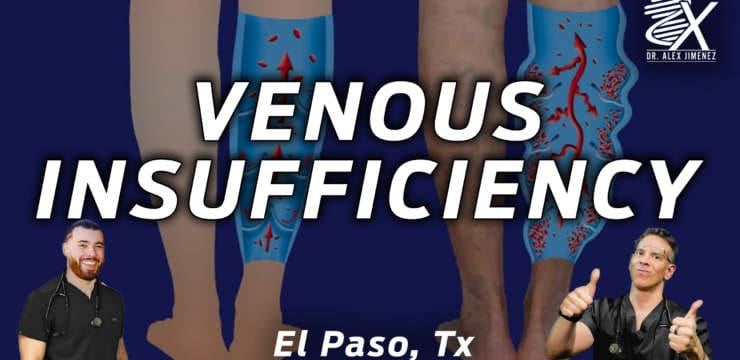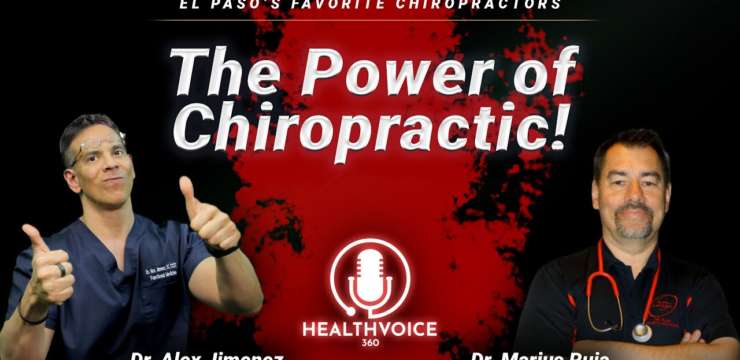
Uncover the advantages of swimming for spinal health and how regular practice can lead to better mobility for your ba
Table of Contents
Dive Deeper: The Guide to Spinal Health, Integrating Chiropractic Care and the Power of Swimming
The Silent Epidemic of Back Pain: Finding an Integrated Solution
Back pain is a universal human experience, often referred to as a “silent epidemic” because of its sheer prevalence and capacity to limit daily life. For high school students, in particular, the pressures of heavy backpacks, prolonged sitting in classrooms, hours spent looking down at screens, and intense participation in sports can all contribute to significant spinal stress. When back pain strikes, it doesn’t just hurt; it affects academic performance, social life, and overall mental well-being. The search for effective, long-lasting relief often leads to complex, sometimes overwhelming, treatment options.
Fortunately, there is a powerful, non-pharmacological, and highly effective two-part solution that integrates the structural alignment of chiropractic care with the therapeutic buoyancy of swimming and aquatic exercise (Duncan Chiropractic, 2024). This integrated approach not only addresses immediate pain but also promotes the long-term strength and stability necessary for a healthy, active life, regardless of whether you’re an athlete or primarily focused on your studies. By combining targeted, hands-on care with the natural healing environment of water, individuals can find a pathway to optimal spinal health that conventional methods often miss.
The American College of Physicians recommends non-pharmacologic treatment for chronic low back pain, with approaches like exercise and spinal manipulation being key components (ACAToday, 2017). This is where the synergy between chiropractic and aquatic therapy truly shines. Chiropractic care focuses on the crucial relationship between the spine and the nervous system, while swimming provides a low-impact environment for building the necessary muscular support (Jimenez, n.d.-a). Together, they offer a comprehensive strategy for managing pain and achieving total body wellness.
Chiropractic Care: Aligning the Body’s Control Center
What is Chiropractic Care?
Chiropractic care is a primary health care discipline that focuses on diagnosing, treating, and preventing mechanical disorders of the musculoskeletal system, as well as their effects on the nervous system and general health. The core of chiropractic treatment involves spinal manipulative therapy (SMT), or adjustments, which are controlled, precise forces applied to a joint to restore proper motion and alignment (Chiropractic and self-care for back-related leg pain, n.d.).
Imagine your spine as a complex, 33-segment suit of armor protecting the spinal cord—the body’s master control system. If even a few segments, or vertebrae, are slightly misaligned—a condition a chiropractor might call a subluxation or joint restriction—it can irritate the nerves that exit the spinal column. This nerve irritation can cause pain not just in the back, but also in other areas of the body, a phenomenon sometimes referred to as viscerosomatic pain (HealthVoice360, 2024).
The overarching goal of a chiropractor is to improve the patient’s functional capacity (ACAToday, 2017). By gently restoring normal joint movement, chiropractic care aims to:
- Reduce Pain: Spinal adjustments help reduce pressure on pain-sensitive tissues, immediately easing discomfort.
- Improve Mobility: Restoring alignment allows for a greater, pain-free range of motion.
- Optimize Nervous System Function: A properly aligned spine ensures clear communication between the brain and the rest of the body (HealthVoice360, 2024).
- Facilitate Healing: By reducing nerve interference and muscle tension, the body is placed in a better position to heal itself.
The Role of Active Care and Rehabilitation
While spinal adjustments are crucial, effective chiropractic care is always integrated with what is called “active care” (ACAToday, 2017). Active care involves exercises, stretches, and lifestyle modifications that teach the patient how to maintain their spinal health independently. This is where swimming and aquatic exercise become a fundamental partner to chiropractic adjustments.
Chiropractic adjustments set the stage for healing by correcting structural issues. Aquatic therapy then enters the picture to stabilize those corrections by strengthening the deep core muscles and improving flexibility without placing strain on the joints (Duncan Chiropractic, 2024). A typical therapeutic trial of chiropractic care might consist of 6-12 visits over a few weeks, with exercise and patient education increasingly integrated into the plan of management (ACAToday, 2017).
The Clinical Edge of Dr. Alexander Jimenez: Advanced Diagnostics and Dual-Scope Integration
The Power of Dual Credentials
The field of spinal health is constantly evolving, demanding a comprehensive, multi-faceted approach. This is the guiding principle behind the integrative care model of Dr. Alexander Jimenez, DC, APRN, FNP-BC (Injury Medical & Chiropractic Clinic, n.d.-a). His unique combination of credentials—a Doctor of Chiropractic (DC) and a board-certified Advanced Practice Registered Nurse/Family Nurse Practitioner (APRN, FNP-BC)—provides a powerful dual-scope perspective in patient care.
This dual perspective allows Dr. Jimenez to approach injuries from both a musculoskeletal (chiropractic) and a systemic/medical/functional medicine (nurse practitioner) standpoint. His integrative protocols are designed to go beyond treating symptoms and instead focus on identifying the root cause of complex conditions like chronic neck pain, severe sciatica, disc herniation, and fibromyalgia (Jimenez, n.d.-b).
Precision: Advanced Imaging and Diagnostic Evaluations
A cornerstone of Dr. Jimenez’s practice is his reliance on advanced imaging and comprehensive diagnostic evaluations. Simply put, you cannot treat what you do not accurately diagnose.
- Advanced Imaging (MRI/X-ray): When a patient presents with persistent low back pain accompanied by signs of radiculopathy (nerve pain radiating down the leg, like sciatica) or potential spinal stenosis (narrowing of the spinal canal), Dr. Jimenez incorporates advanced imaging, preferably Magnetic Resonance Imaging (MRI), to clearly visualize the structures (ACAToday, 2017). This level of detail is necessary to understand the precise mechanical failure, such as the location and severity of a herniated disc, which then informs a highly specific treatment plan.
- Functional Medicine Assessments and Diagnostic Evaluations: Beyond structural imaging, Dr. Jimenez employs a functional medicine approach. This includes advanced diagnostic protocols such as detailed blood panels and other assessments to evaluate a patient’s metabolic, hormonal, and nutritional status (Injury Medical & Chiropractic Clinic, n.d.-a). For example, chronic inflammation can exacerbate back pain. By running diagnostic tests, Dr. Jimenez can identify underlying systemic dysfunctions, such as nutritional deficiencies or inflammatory markers, that contribute to the chronic pain cycle.
The Dual-Scope Procedure in Practice
Dr. Jimenez’s “dual-scope” integration is not a single procedure but a philosophy of total patient care (Jimenez, n.d.-b).
- Scope 1: Structural/Physical Medicine (DC): He uses chiropractic adjustments and physical rehabilitation to correct spinal alignment, improve biomechanics, and reduce immediate structural stress.
- Scope 2: Systemic/Functional Medicine (APRN, FNP-BC): He uses medical knowledge and functional diagnostics to address the internal, physiological environment—the “terrain” of the body. This involves personalized nutritional interventions, lifestyle counseling, and the use of evidence-based medicine to manage chronic degenerative processes (Injury Medical & Chiropractic Clinic, n.d.-a).
This comprehensive, integrated approach is particularly effective for injuries, as highlighted on his website: “Starting Swimming Exercises for Back Health” (Jimenez, n.d.-b). He first ensures the patient’s structure is optimized through chiropractic care, then systematically introduces exercises like swimming, which provides the perfect low-impact environment to build the lasting stability identified as necessary by advanced diagnostics (Jimenez, n.d.-b). This ensures that treatment addresses both the ‘hardware’ (the spine) and the ‘software’ (the body’s chemistry and systemic health).
The Healing Power of Water: Swimming and the Musculoskeletal System
Swimming is universally regarded as one of the best forms of exercise for spinal health, largely due to the unique physical properties of water. This is why aquatic therapy, or hydrotherapy, has become a mainstay in physical rehabilitation, particularly for individuals struggling with chronic or acute back pain (HydroWorx, n.d.).
The Four Pillars of Aquatic Therapy
The entire effectiveness of swimming as a therapeutic tool rests on four fundamental properties of water:
1. Buoyancy: The Anti-Gravity Effect
Buoyancy is the upward force exerted by a fluid that opposes the weight of an immersed object. This is arguably the single most important property for back pain sufferers. When submerged in water, the body essentially becomes weightless, or at least significantly lighter.
- Spinal Decompression: If you are submerged up to your chest, approximately 80% of your body’s weight is offloaded from your spine and joints (HydroWorx, n.d.; SMART Sports Medicine, 2024). Submerged to the neck, up to 90% of your body weight can be supported (Buffalo Chiropractic, 2025). This dramatic reduction in pressure provides a near-zero-gravity environment for the spine. For someone with a painful, compressed disc or an arthritic joint, this reduced pressure is a game-changer. It allows the spine to decompress and relax, easing pain and permitting movement that would be excruciating on land.
- Safety and Confidence: The buoyancy effect allows individuals with limited mobility or severe pain to perform exercises without the fear of falling or re-injuring themselves (HydroWorx, n.d.). It supports the body and makes it easier to regain range of motion, which is vital for patients recovering from sprains, strains, or post-surgical conditions.
2. Viscosity and Resistance: Building Muscle Without Strain
Water is much thicker than air, and this property is called viscosity. Viscosity provides natural resistance to movement. This means that as you move your limbs through the water, you are constantly working against resistance.
- High Benefit, Low Impact: This natural resistance allows you to strengthen your muscles without the need for heavy weights or the harsh, high-impact force that land-based exercises create (Duncan Chiropractic, 2024). The faster you move, the greater the resistance, allowing for easily adjustable intensity.
- Balanced Muscle Development: Swimming demands a holistic engagement of the body. Every time you push water, you are building strength in opposing muscle groups. This is particularly effective for the core muscles—the deep stabilizers of the spine (transversus abdominis, multifidus, obliques). Strengthening these muscles provides a natural, internal “back brace,” which is essential for maintaining the alignment achieved through chiropractic care.
3. Hydrostatic Pressure: The Gentle Hug
Hydrostatic pressure is the pressure exerted by a fluid on an immersed object. In a pool, this pressure acts uniformly on the body from all directions.
- Reduced Swelling and Improved Circulation: This all-encompassing pressure acts like a full-body compression garment, helping to push fluids out of tissues. This can significantly reduce swelling (edema), which is often a source of discomfort and restricted movement following an injury or in conditions like arthritis (Buffalo Chiropractic, 2025).
- Enhanced Proprioception: The constant pressure also increases a person’s awareness of their body’s position in space (proprioception). This is crucial for improving balance and coordination, key components in preventing future falls and injuries (Duncan Chiropractic, 2024; Buffalo Chiropractic, 2025).
4. Thermal Conductivity and Warmth: Relaxation and Healing
Most therapeutic pools are maintained at a temperature that is warmer than a standard recreational pool. This warmth has a direct, soothing effect.
- Muscle Relaxation: Warm water increases blood flow (circulation) to stiff or injured areas and helps to relax tense muscles (HydroWorx, n.d.). This is especially beneficial for individuals dealing with muscle spasms and chronic tension often associated with back pain.
- Pain Relief: The soothing warmth can work directly on the skin and nerves as a natural pain reliever, reducing stress and anxiety, which are often linked to chronic pain (Duncan Chiropractic, 2024; Physiopedia, 2024).
Movement Medicine: Chiropractic Care- Video
Aquatic Exercises for Back Pain Relief
The pool environment is versatile, offering both deep and shallow water options, each with distinct benefits for a person dealing with back pain. These exercises are often prescribed in conjunction with chiropractic adjustments to maximize recovery and structural stability (Jimenez, n.d.-b).
Deep Water (Non-Weight Bearing) Exercises
Deep water is ideal for the initial stages of rehabilitation or for those with severe pain, as it maximizes the buoyancy effect and eliminates impact forces.
Shallow water (chest or waist level) introduces some weight-bearing stress, which is necessary to transition back to land activities.
The Swimming Strokes: Technique is Key
For general fitness and spinal health, the choice of swimming stroke is critical.
- Backstroke (Dorsal Stroke): Often the best choice for individuals with back pain. It keeps the spine in a neutral, flat position and encourages gentle rotational movement, which is excellent for mobility. It also strengthens the back extensors and shoulders, promoting good posture.
- Front Crawl (Freestyle): This is a balanced stroke that strengthens the entire body. It requires controlled rotation, which can be therapeutic, but it’s vital to maintain a neutral neck position and avoid excessive rotation that could strain the lumbar spine.
- Avoid (Initially): Strokes like the butterfly or the aggressive breaststroke often involve excessive arching of the low back (lumbar hyperextension) and rapid, forceful movements, which can aggravate existing spinal injuries. These should be avoided until full recovery is achieved and cleared by a clinician like Dr. Jimenez.
Making a Splash: Essential Aquatic Tools and Equipment
While simply getting in the water is the first step, a variety of simple and inexpensive tools can make aquatic exercises more effective, enjoyable, and safe. These tools adjust the water’s natural resistance and buoyancy to meet an individual’s specific needs, allowing for a personalized approach to rehabilitation (Physiopedia, 2024; SMART Sports Medicine, 2024).
Flotation and Support Aids
These tools primarily enhance buoyancy, providing greater support and stability for those who need to minimize weight-bearing or who lack strong core control.
- Flotation Belts (Aqua Joggers): These foam belts wrap around the waist, providing vertical support in deep water (Physiopedia, 2024). They are essential for deep-water walking, running, or performing spinal traction, ensuring the head stays above water and allowing the legs and core to focus on movement rather than treading water.
- Pool Noodles: The ultimate versatile tool. Noodles can be used as a flotation device under the arms or legs, or bent to provide light resistance when pushed through the water. For back pain, a noodle can be placed under the arms while standing to gently stretch the lower back and support the upper body while performing leg exercises.
- Kickboards: Primarily used to isolate the lower body. By holding the kickboard with your hands, you remove the upper body’s propulsion, forcing the legs and, crucially, the core stabilizers to do all the work. This is a powerful way to build the strength necessary to support the spine (Physiopedia, 2024).
Resistance and Strengthening Aids
These tools increase the surface area that moves through the water, thus intensifying the water’s natural resistance for a greater strength-building workout.
- Aquatic Dumbbells (Water Weights): These are foam or specialized plastic dumbbells that use buoyancy to provide resistance. Unlike land dumbbells that rely on gravity and weight, water weights resist your efforts to push them down and to push them up out of the water. This provides a balanced, bilateral resistance that effectively targets the arm, chest, and shoulder muscles, which are key for maintaining good upper-body posture (Physiopedia, 2024).
- Hand Paddles and Fins (Flippers): Paddles increase the surface area of your hands, making each stroke require significantly more effort, thereby building upper-body and core strength during swimming. Fins, or flippers, increase the surface area of the feet, intensifying the leg workout, which strengthens the glutes and leg muscles that support the lower back (Physiopedia, 2024).
- Underwater Treadmills: Found in specialized physical therapy pools, these allow patients to walk or run in a highly controlled, temperature-regulated environment. The water level can be adjusted to precisely control the amount of body weight that is supported (HydroWorx, n.d.).
Using the right equipment transforms a simple swim into a targeted, therapeutic exercise session that is not only effective for spinal health but is also more engaging and enjoyable, encouraging consistency—a key component of long-term wellness.
Conclusion: Commitment to Your Spinal Future
The journey to optimal spinal health is rarely a sprint; it is a marathon that requires commitment, correct guidance, and an understanding of the relationship between structure and function. Combining the targeted, corrective force of chiropractic care with the supportive, strengthening environment of swimming and aquatic therapy provides a powerful, evidence-based approach to managing back pain and enhancing lifelong physical function. From Dr. Jimenez’s integrative, dual-scope clinical insight—which uses advanced imaging and diagnostics to pinpoint the root cause of injury—to the simple, low-impact mechanics of a flutter kick, this comprehensive strategy ensures that the entire person, not just the symptom, is treated.
We strongly encourage you to learn more about this integrated approach and the advanced diagnostic protocols offered by experts in the field. To start your journey toward a healthier spine, review the insights on integrating swimming and chiropractic care available at Dr. Alex Jimenez’s Clinical Wellness Blog.
Serious Note and Disclaimer
This comprehensive blog post, in scope and detail, serves as a serious and exhaustive educational resource on the theoretical benefits and clinical integration of chiropractic care and aquatic exercise for spinal and back health. It is not, however, a substitute for professional medical advice, diagnosis, or treatment. The information contained herein is for informational purposes only. You must consult with a qualified health care provider, such as a Doctor of Chiropractic, a Nurse Practitioner, or a Medical Doctor, before starting any new exercise regimen, especially if you are dealing with chronic pain or a serious injury. Do not disregard professional medical advice or delay in seeking it because of something you have read in this article. All references to specific medical procedures or clinical practices, particularly those associated with Dr. Alexander Jimenez, DC, APRN, FNP-BC, are provided to illustrate an advanced, integrative model of care and should not be misconstrued as general clinical recommendations without individual consultation.
References
- ACAToday. (2017). Research review: Clinical practice guideline: Chiropractic care for low back pain. American Chiropractic Association. ACAToday website
- Buffalo Chiropractic & Physical Therapy. (2025). Aqua therapy: A gentle approach to recovery and rehabilitation. Buffalo Chiropractic website
- Chiropractic and self-care for back-related leg pain: Design of a randomized clinical trial. (n.d.). PMC. Retrieved October 15, 2025, from Chiropractic and self-care for back-related leg pain: Design of a randomized clinical trial
- Duncan Chiropractic. (2024). The benefits of aquatic therapy for back pain – A chiropractor’s perspective. Duncan Chiropractic Ohio website
- HealthVoice360. (2024). Chiropractic care: Key insights for the immune system – Integrative Wellness Podcast | El Paso, Texas. HealthVoice360 website
- HydroWorx. (n.d.). Aquatic therapy benefits for chronic pain & back pain. HydroWorx website
- Injury Medical & Chiropractic Clinic. (n.d.-a). Alex, Jimenez DC, APRN, FNP-BC, CFMP, IFMCP – El Paso, TX 79936 – A4M. A4M website
- Jimenez, A. (n.d.-a). Dr. Alex Jimenez’s clinical wellness blog. Retrieved October 15, 2025, from dralexjimenez.com/
- Jimenez, A. (n.d.-b). Starting swimming exercises for back health – EP Chiropractic. Retrieved October 15, 2025, from dralexjimenez.com/starting-swimming-exercises-for-back-health-ep-chiropractic/
- Physiopedia. (2024). Aquatic therapy in the management of chronic low back pain. Physiopedia website
- SMART Sports Medicine. (2024). Benefits of aquatic therapy for low back pain. SMART Sports Medicine website
Disclaimers
Professional Scope of Practice *
The information herein on "Swimming: Key Practices for Spinal & Back Health" is not intended to replace a one-on-one relationship with a qualified health care professional or licensed physician and is not medical advice. We encourage you to make healthcare decisions based on your research and partnership with a qualified healthcare professional.
Blog Information & Scope Discussions
Welcome to El Paso's wellness blog, where Dr. Alex Jimenez, DC, FNP-C, a board-certified Family Practice Nurse Practitioner (FNP-C) and Chiropractor (DC), presents insights on how our team is dedicated to holistic healing and personalized care. Our practice aligns with evidence-based treatment protocols inspired by integrative medicine principles, similar to those found on dralexjimenez.com, focusing on restoring health naturally for patients of all ages.
Our areas of chiropractic practice include Wellness & Nutrition, Chronic Pain, Personal Injury, Auto Accident Care, Work Injuries, Back Injury, Low Back Pain, Neck Pain, Migraine Headaches, Sports Injuries, Severe Sciatica, Scoliosis, Complex Herniated Discs, Fibromyalgia, Chronic Pain, Complex Injuries, Stress Management, Functional Medicine Treatments, and in-scope care protocols.
Our information scope is limited to chiropractic, musculoskeletal, physical medicine, wellness, contributing etiological viscerosomatic disturbances within clinical presentations, associated somato-visceral reflex clinical dynamics, subluxation complexes, sensitive health issues, and functional medicine articles, topics, and discussions.
We provide and present clinical collaboration with specialists from various disciplines. Each specialist is governed by their professional scope of practice and their jurisdiction of licensure. We use functional health & wellness protocols to treat and support care for the injuries or disorders of the musculoskeletal system.
Our videos, posts, topics, subjects, and insights cover clinical matters, issues, and topics that relate to and directly or indirectly support our clinical scope of practice.*
Our office has reasonably attempted to provide supportive citations and has identified the relevant research studies or studies supporting our posts. We provide copies of supporting research studies available to regulatory boards and the public upon request.
We understand that we cover matters that require an additional explanation of how they may assist in a particular care plan or treatment protocol; therefore, to discuss the subject matter above further, please feel free to ask Dr. Alex Jimenez, DC, APRN, FNP-BC, or contact us at 915-850-0900.
We are here to help you and your family.
Blessings
Dr. Alex Jimenez DC, MSACP, APRN, FNP-BC*, CCST, IFMCP, CFMP, ATN
email: coach@elpasofunctionalmedicine.com
Licensed as a Doctor of Chiropractic (DC) in Texas & New Mexico*
Texas DC License # TX5807
New Mexico DC License # NM-DC2182
Licensed as a Registered Nurse (RN*) in Texas & Multistate
Texas RN License # 1191402
ANCC FNP-BC: Board Certified Nurse Practitioner*
Compact Status: Multi-State License: Authorized to Practice in 40 States*
Graduate with Honors: ICHS: MSN-FNP (Family Nurse Practitioner Program)
Degree Granted. Master's in Family Practice MSN Diploma (Cum Laude)
Dr. Alex Jimenez, DC, APRN, FNP-BC*, CFMP, IFMCP, ATN, CCST
My Digital Business Card






